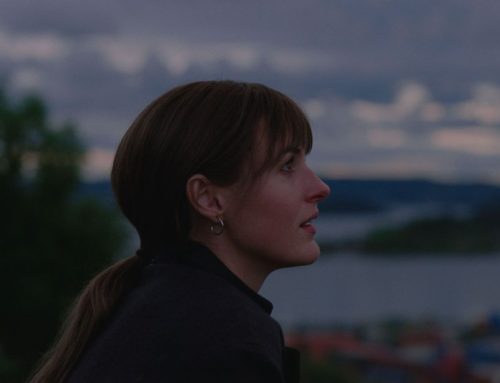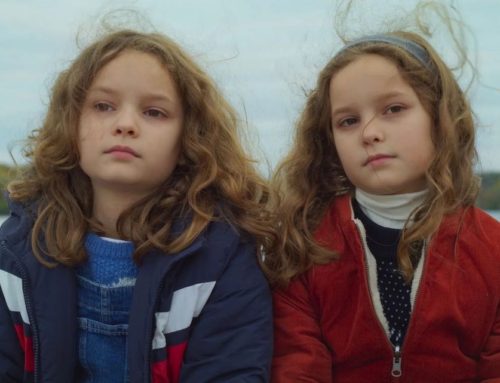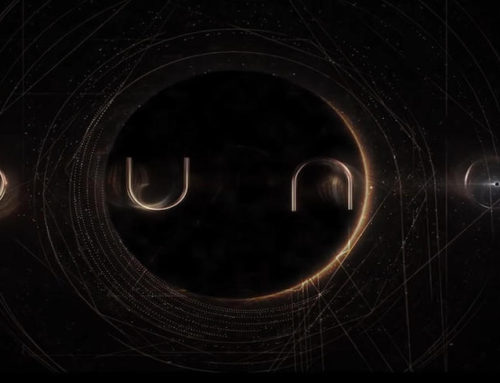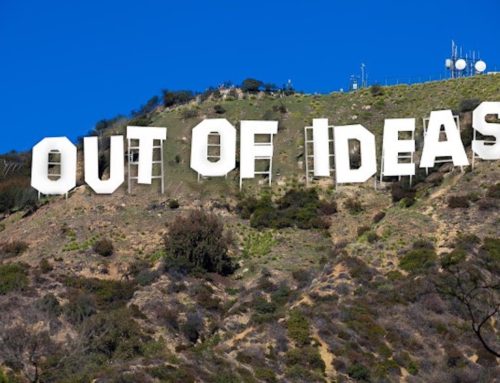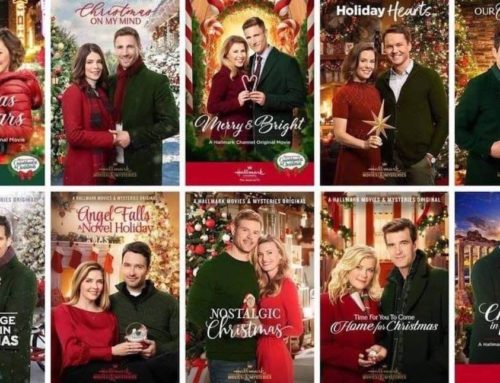Finally, I managed to see the latest Woody Allen film. It’s not available for streaming, wasn’t released in the UK, and I didn’t want to watch it on a DVD. Apparently, in today’s Dark Age of plague and politically correct puritans, one has to go to a cinema in Eastern Europe in order to see the 49th picture of one of the most notable living filmmakers. Crazy times indeed.
Anyhow, Allen’s Rifkin’s Festival is a safe territory for the well seasoned director. It’s a sometimes funny story about rich, childless people with no real problems, whose relationship falls apart on the background of an aesthetically pleasing city. The protagonist is Mort Rifkin, a retired teacher of cinema, who’s now trying to write a novel. He goes to the San Sebastián International Film Festival together with his wife Sue, who’s the PR of Philippe, a successful film director. Mort suspects—and is correct—that his wife is having an affair with the filmmaker and that makes him question all his life choices. Being the expected Woody Allen hypochondriac, he meets Jo, a beautiful Spanish doctor, and becomes smitten with her. However, a relationship between them is not to be and, after his wife dumps him—keeping their Andy Warhol silkscreen for herself—he gives up on writing the novel and goes back to New York with the desire to teach film again.
On the whole, Woody Allen devotees, like me, won’t be disappointed. They’re treated to the typical funny Allen bits, such as a movie director saying to a sexy, model-like actress that she’d be perfect to play Hannah Arendt in a new film on the Eichmann trial. Or when, on being asked what he would say to God if he met him face to face, Mort says “After what God’s done I’ve nothing to say to him; let him talk to my lawyer”. And, of course, there’s the manifestation of Death in the form of perspiring Christoph Waltz, who gives us advise on how to keep healthy and underlines the importance of having colonoscopy.
An unexpected and pleasing facet of the movie is the series of visions and dreams that Mort goes through, in which Allen lovingly parodies scenes from some of his favourite pictures by filmmakers such as Welles, Truffaut, Buñuel, Fellini and Bergman. Whenever they approach, the movie changes from colour to black and white, and its aspect ratio shrinks. In the one that’s a very Jewish take on Citizen Kane, a young Mort holds onto a sledge that used to belong to a woman called Rose Budnick. In another, Mort’s wife and doctor, as if stepping out of Bergman’s Persona, talk in Swedish in extreme close-ups about how Mort’s greatest sin is liking films with subtitles. Charming as these are, though, the references are accessible only to cinephiles. Many of the characters in the film deride Mort’s elitist tastes, yet these parts make the film itself somewhat elitist. But again… it’s not Allen’s responsibility to educate his audience; everybody’s responsible for his own enlightenment.
The thing in the film that’s accessible to all is the pleasing performances of the actors. As usual in Allen’s films, the cast does a great job, probably thanks to his restraint from giving them many, if any, directions. Wallace Shawn plays Mort and is the perfect amalgam between his shrivelled self and the neurotic Allen. Louis Garrel is excellent in playing a pretentious, womanising French director, and Elena Anaya manages to convey her inner turmoil with moving subtlety. The one that stands out most of all, though, is Gina Gershon, who has the role of Mort’s wife. Her expressive mouth and eyes and hands enable her to paint a very detailed and lively character, stealing every scene she is in.
Unlike the film as a whole, which at times lacks meticulousness. For one thing, it regurgitates the ready-made motives that Allen has already explored many times and in better ways in his previous films. For instance, we have women fascinated by so-called brilliant men; we have an overly passionate Spanish artist; we have an older man attracted to a younger woman. We even have Allen’s obsession with New York, though the film isn’t set there. His Spanish doctor character had to have lived in the Big Apple for a while so that she and Mort would have something to talk about.
The bigger problem, however, is that the film feels carelessly put together. There isn’t much of the precision of his iconic earlier films, nor of his better pictures of the last two decades. Allen often uses voice-over narration and it can be quite effective, yet here it sounds a bit lazy; a quick and easy way to patch up the story with words when the other, more potent aspects of the cinematic vocabulary fail or haven’t been tried at all. The movie ends with a surprisingly lousy montage of previous scenes that is little more than filler material and is more appropriate for a project of a second-year film student.
Moreover, Rifkin’s Festival has a compositional frame: it opens with Mort talking to his therapist in New York and ends with the same. Although that’s an effective way to present a story in a tight manner, there’s something irksome about the frame of this particular film. The therapist in these two scenes is of absolutely no importance, he’s there just so that Mort would have somebody to talk to and that way tell us his story. We therefore don’t need to see his face, however, at the opening scene we’re given several frames of it, which makes us think that this character will have some more consequential participation in the narrative, making us anticipate his reappearance. But he doesn’t do anything; he doesn’t have a single line. The shot of his face was probably inserted so that the actor wouldn’t be offended by being shown only from the back. Yet it’s useless, misleading and feels somehow untidy.
Another glaring—and therefore irritating—thing is that Allen tries to flatter his hosts in San Sebastián. On numerous occasions characters would talk about how beautiful the town is. The thing is… we see that it’s beautiful; we don’t need to be told that all the time. This lack of subtlety gives the movie the feel of a tourist video that promotes Spain for the holiday season. Also, with all the talk of how beautiful San Sebastián is, the town’s of no consequence whatsoever to the plot of the film, unlike Paris was in Midnight in Paris. It’s just a pretty background and the same story could’ve been shot in any other nice town in Europe. Of course, that’s characteristic for Allen. One of his best features, Match Point (2005), was supposed to be shot in New York, but when it turned out that London was a better option for production reasons, they shot it there with minimal changes to the script. So almost all of Allen’s movies can seamlessly change their setting, as long as it’s of an exciting, aesthetically pleasing city. But the characters in them don’t talk all the time about how wonderful those cities are, stating the obvious to all of us.
On the other hand, one of the things Allen excels in, and this film is no exception, is his ability to weave sophisticated comments about the role and nature of art and artists in his dialogue, without making it turgid. In Rifkin’s Festival, the director mocks the many artists who try to telegraph their virtue to the world by standing up against war, famine, racism, sexism etc through explicitly political statements. For both Allen and his character Mort politics is ephemeral and art should focus on the big, unanswerable existential questions, such as why are we here and is there any meaning to life. When he hears that the pompous director Philippe wants to reconcile the Arabs and Israel with his next film, Mort quips “Yes, I’m glad he’s turning to science-fiction”. In light of what was happening in the Middle East recently, and the impotent and ridiculous ways many celebrities took sides publicly and called for ceasefire (or worse), it’s refreshing to see Allen making fun of this kind of inflated feeling of self-importance.
Maybe the most interesting thing in Rifkin’s Festival is Allen’s musings about the way art is created. Mort has been working on his first novel, yet it’s been years since he started it. Being a perfectionist who wants to produce a piece of writing that’s on the level of Ulysses by Joyce and The Brothers Karamazov by Dostoyevski, Mort would write a page and, always dissatisfied with it, he would rip it up and start again. But this means that he’ll never finish it. Umberto Eco’s advice to beginner writers was not to take themselves too seriously and not to think of themselves as great artists, wanting to become immediately a new Homer. The thing is that Joyce of Ulysses and Dostoyevski of The Brothers Karamazov had novels and stories before that. They were first apprentices who made mistakes before they wrote their masterpieces.
Mort is a man in the closing of his life, working on his very first novel. Unless he’s a genius, which he doesn’t seem to be, it cannot be a masterpiece. However, an artist can’t even reach the possibility of creating something of note before producing works of lesser worth first. It’s wrong not to finish anything out of fear that it won’t be destined to enter the world canon, for then you’d have produced nothing at all. Allen, as many other masters, believe that the important thing is the trying. Of course, the opposite extreme of uncritically vomiting out undeveloped, misshapen work is also to be advised against. Balance is necessary. Maybe it would do Allen good to rip up a page or two sometimes.
Another characteristic of the famous director’s work as a whole and this film in particular is his preoccupation with death. Allen’s view, verbalised by Christoph Waltz as the Grim Reaper, is clear: life’s meaningless, but not necessarily empty. A human being can fill it with love, family, work and other rewarding distractions. Just as with art, the key to life is in the trying. Whether right or wrong, that’s a comforting message. But still, in our modern culture, Allen’s obsession with the transience of human life seems to be a curiosity.
It’s as if people have forgotten how to talk about death. Loosing a loved one, let alone realising the fact that someday you will disappear too, has always been a difficult thing to cope with. But today, in an age that lacks fixed metaphysics, which denies many of us the spiritual certainty of previous generations, that reality seems even more terrible. People in the past lived with the recognition of death all the time; the sorrow that came with it permeates their poetry, paintings and music. They even gave one another memento mori, as reminders that they will die and that it’s important to do the best with the little time they’re given. The pandemic of last year showed us how unprepared we are, culturally and spiritually, to face the inescapable.
The hero of Rifkin’s Festival has a strange name: Mort. One of the possible origins of that name is that it used to be given to those who played the part of Death in medieval pageants. Maybe Mort Rifkin is Death, the leader of the dance macabre who leads us all to out ultimate end? Maybe Allen and the artist in general embody, or ought to embody the figure of the Grim Reaper, and remind us, even prepare us for the end.
Woody Allen’s 49th film is not his best, nor is it his worst. For Allen’s fans, seeing it would bring them tamed joy. For others, it would give them light distraction, peppered with dark, but important musings that would be caught by those who are open to them. The movie feels a bit unrealistic but Allen himself has said that reality is his archenemy. In his autobiography he likens himself to Blanche DuBois, who says “I don’t want reality, I want magic!” He achieved it in many of his films and to some extent in this one. Yet even with that magic, there’s sadness in his endings; a quiet mourning of unrealised longing and possibilities. Hopefully, he’ll manage to realise at least one more masterpiece. In the meantime, I look forward to his next film.
‘Wrap Your Troubles in Dreams: Review of Rifkin’s Festival’ is an article written by Kyril Buhowski. You can follow Kyril Buhowski on Instagram.

